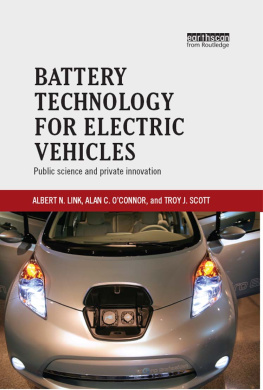Copyright
Academic Press is an imprint of Elsevier
125 London Wall, London EC2Y 5AS, United Kingdom
525 B Street, Suite 1650, San Diego, CA 92101, United States
50 Hampshire Street, 5th Floor, Cambridge, MA 02139, United States
The Boulevard, Langford Lane, Kidlington, Oxford OX5 1GB, United Kingdom
Copyright 2023 Elsevier Inc. All rights reserved.
No part of this publication may be reproduced or transmitted in any form or by any means, electronic or mechanical, including photocopying, recording, or any information storage and retrieval system, without permission in writing from the publisher. Details on how to seek permission, further information about the Publisher's permissions policies and our arrangements with organizations such as the Copyright Clearance Center and the Copyright Licensing Agency, can be found at our website: www.elsevier.com/permissions.
This book and the individual contributions contained in it are protected under copyright by the Publisher (other than as may be noted herein).
Notices
Knowledge and best practice in this field are constantly changing. As new research and experience broaden our understanding, changes in research methods, professional practices, or medical treatment may become necessary.
Practitioners and researchers must always rely on their own experience and knowledge in evaluating and using any information, methods, compounds, or experiments described herein. In using such information or methods they should be mindful of their own safety and the safety of others, including parties for whom they have a professional responsibility.
To the fullest extent of the law, neither the Publisher nor the authors, contributors, or editors, assume any liability for any injury and/or damage to persons or property as a matter of products liability, negligence or otherwise, or from any use or operation of any methods, products, instructions, or ideas contained in the material herein.
ISBN 978-0-443-18862-6
For information on all Academic Press publications visit our website at https://www.elsevier.com/books-and-journals

Publisher: Charlotte Cockle
Acquisitions Editor: Edward Payne
Editorial Project Manager: Joshua Mearns
Production Project Manager: Fizza Fathima
Cover Designer: Miles Hitchen
Typeset by STRAIVE, India
Dedication
To our families, friends, and colleagues, for their support and inspiration.
About the authors
Marc A. Rosen, PhD, is Professor at Ontario Tech University (officially University of Ontario Institute of Technology) in Oshawa, Ontario, Canada, where he served as founding Dean of the Faculty of Engineering and Applied Science. With more than 70 research grants and contracts and 900 technical publications, Dr. Rosen is an active teacher and researcher in sustainable energy, energy storage, thermodynamics, and environmental impact. Much of his research has been carried out for industry. Dr. Rosen has served as President of the Engineering Institute of Canada and of the Canadian Society for Mechanical Engineering. He has acted in many professional capacities, including Editor-in-Chief of various journals and Director of Oshawa Power and Utilities Corporation. Dr. Rosen has worked for such organizations as Imatra Power Company in Finland, Argonne National Laboratory near Chicago, the Institute for Hydrogen Systems near Toronto, and Toronto Metropolitan University (formerly Ryerson University) in Toronto, where he served as Chair of the Department of Mechanical, Aerospace, and Industrial Engineering. Dr. Rosen has received numerous awards and honors and is Fellow of numerous societies, including the Engineering Institute of Canada, Canadian Academy of Engineering, Canadian Society for Mechanical Engineering, American Society of Mechanical Engineers, International Energy Foundation, and Canadian Society for Senior Engineers.
Aida Farsi, PhD, is a postdoctoral fellow at Ontario Tech University, Oshawa, Canada, in the Faculty of Engineering and Applied Science. Her current research focuses on developing environmentally benign and sustainable systems for hydrogen production and storage. She also pursued her PhD degree in the area of clean hydrogen production via thermochemical copper chlorine cycle in which she developed an electrochemical model for the CuCl/HCl electrolyzer and a multiphase flow model for efficient recycling of the oxidized anolyte in the electrolyzer. With over 25 technical publications, Dr. Farsi is an active researcher in sustainable energy storage technologies and freshwater production systems.
Preface
Over the past few decades, with rising concerns regarding energy and the environment as well as advancements in cross-disciplinary communications between electrical and mechanical engineers and material scientists and electrochemists, the battery technology market has expanded greatly. It has also expanded from small- to large-scale applications during this period. At the same time, increasing greenhouse gas emissions from fossil fuelbased energy systems and concerns over energy security have led to the development of renewable energybased systems for electricity production as well as the development of smart cities that use stable smart grids with clean sources of energy. Increasing the use of renewable energybased systems usually leads to an increase in the use of energy storage systems, including battery systems, to balance the intermittent and fluctuating electrical power production and, consequently, to improve the reliability and overall usefulness of the energy systems. In addition, concerns over unstable energy prices and increasing carbon emissions from fossil fuelbased automobiles have led to significant growth in the utilization of electric vehicles and research in this area. The electric vehicle, including battery storage, is considered a highly promising technology for the future, with significant benefits to society, owning to its high efficiency, low emissions, and low noise.
Important needs for more widespread adoption of battery technology in automobiles and other applications include lowering the energy storage cost and environmental impacts, increasing the specific energy and energy density, enhancing power grid compatibility, improving fast charging, and ensuring safe operation. Achieving these needs requires a deep understanding of various types of battery cells and an ability to analyze them. It also requires an ability to optimize the design of battery packs to delay aging mechanisms in battery cells, to reduce or minimize uneven current distributions, to properly control discharge and charge operations, and to avoid risks of failures in battery packs.
In line with the aforementioned needs, this book describes battery technologies, with a focus on thermal behavior and sustainable approaches for efficient electrical energy storage via battery systems. Given that a significant interest in the thermal behavior of battery technologies and their thermal management is relatively new, it is particularly important that these areas receive increased attention. This is particularly important for battery applications in electric vehicles.
Battery Technology: From Fundamentals to Thermal Behavior and Management constitutes a comprehensive reference on rechargeable battery technology that describes important aspects of battery operation, analysis, performance, and application, including relevant aging mechanisms and thermal management systems. To provide a more holistic understanding and appreciation, thermodynamic, electrochemical, and thermal concepts and principles, which are important for the design, analysis, and optimization of battery systems, are considered throughout. Recent developments and advances in battery thermal management systems as well as the main design steps for a battery pack are identified and described. Finally, the book addresses the main problems regarding the impact of the thermal behavior of batteries on their life cycles and performance as well as challenges and future directions for sustainable development of battery technologies. Case studies and examples are incorporated throughout the book to help the reader understand and perform practical applications of battery technologies. As a consequence, this book provides a unique text and resource containing organized and synthesized knowledge about battery systems and their analysis that can guide students, researchers, and engineers in understanding and applying key concepts and cutting-edge developments in the field.








